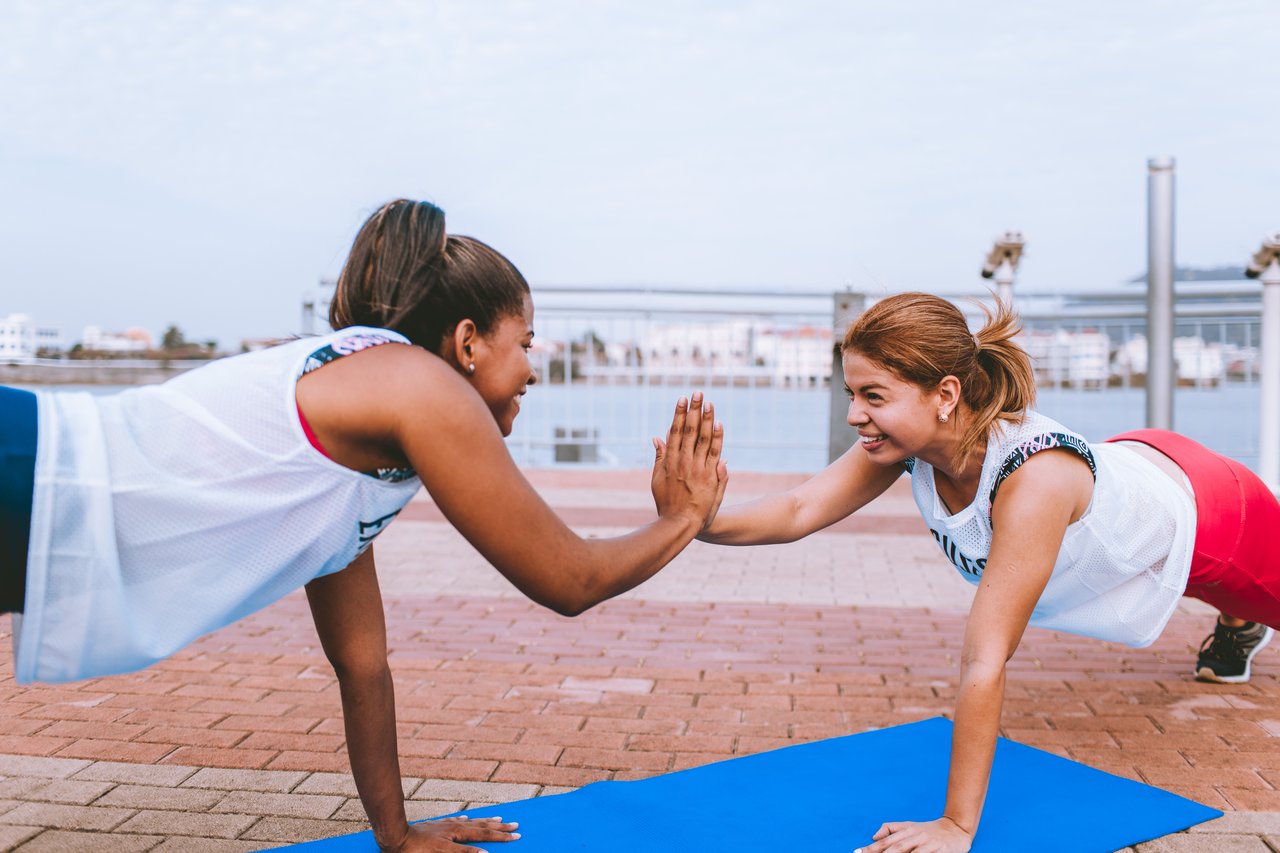EXERCISE FOR STRESS RELIEF
Exercise for stress relief and optimal health. If you lead a sedentary lifestyle, one that involves little or no physical activity, you are at risk of becoming overweight, or chronically ill or less able to cope with stress - which carries its own share of problems. It might be challenging at first if you haven’t exercised in a while but the pay-off is worth the effort.
Exercise for Stress Relief and Enjoy The Benefits
On the fence about getting started on your exercise program? Wouldn't you want to look and feel better? There are several health benefits to be had from getting regular exercise. Listed below are just a few.
- Helps Improve Your Mood - when you exercise your body releases endorphins; hormones within the brain and nervous system that affect your mood, making you feel better.
- Gives A Greater Sense of Well-Being - regular exercise can boost your confidence and self-esteem - knowing you accomplished something good for you. Plus when you are satisfied with yourself and know you are looking good you really do start feeling good.
- Helps to Detoxify Your Body - harmful toxins are released from your body through sweat.
- Increases Oxygen Flow within your body and relaxes your muscles. They become less tense and less tight.
- Improves Mental alertness due to more blood circulating to the brain.
- Helps in maintaining the ideal weight - exercise burns calories. We tend to gain weight when we consume more calories than we burn or use up.
- Helps in reducing the risk of heart disease. It opens up the blood vessels and therefore improves blood circulation. The heart is able to work more efficiently, therefore, reducing the risk of heart attack, stroke, type 2 diabetes, and high blood pressure.
How to Get Started on Your Exercise Program
and Stick With It
Ok, so I just shared with you some of the benefits of exercise for stress relief. If you are wondering where or how to get started, don’t worry, I have you covered. Here are a few tips you should find helpful.
- Get Professional Advice - Before starting any type of exercise for stress relief or otherwise, make sure you consult your doctor. Yes, you hear this all the time but it’s something you should never ignore. You need to know if the exercise routine you are choosing will aggravate any health condition you may have and whether it is ideal for your health and fitness level. A call to the doctor or a visit is a much better option than writhing on the floor in pain hoping help will come quickly.
- Choose An Activity That Works For You, Your Interest, Style, Fitness Level – If you like it you will stick to it and have a greater chance at success and get all the health benefits of exercise for stress relief. Whatever exercise you choose, make sure it works all the major muscle groups and is aerobic (it gets your heart and lungs pumping) to get the most out of the exercise for stress relief. For example, walking at a fast pace, jogging, swimming, or cycling.
- Take the Necessary Precautions - Always warm up your muscles before starting any exercise routine. Stretch before and after your workout. Wear proper clothes and shoes for the type of exercise you choose. Monitor your heart rate. You can buy a heart rate monitor and wear it while you work out so you can track and control your heart rate. Exercise before a meal or 1 hour after a meal.
- Go At Your Own Pace - Don’t just jump out the blocks right away, go according to your fitness level. Take breaks when necessary. Over time you will see your energy and endurance level increase. The more intense the activity the more calories you will burn. Measure the intensity using the talk test. For moderate intensity, you can talk but find it hard to sing. For vigorous intensity, you find it hard to talk without having to catch your breath. Go at a pace that you can handle. Remember the intention is to exercise for stress relief, not to hurt your self and add more stress to your body.
- Regularity and Duration - Exercising at least 4 - 5 days in the week is generally recommended. Exercise for at least 20 minutes. Don’t have 20 minutes? Then work out for 7 minutes. Don’t let time be the reason you skip a workout.
- Make It A Routine - Set aside a specific time of day to do your exercise program, whether morning or evening. Do not set it for the morning if you know you are not a morning person or evening if you know that’s your lowest point of the day. If either time does not matter to you, I suggest that you include it in the first part of your morning. It will improve your mood and set the tone for the day. By doing it first thing in the morning, it’s out the way and no chance for excuses later.
- Stay Hydrated - Ensure you have a bottle of water with you at every workout session. Take timed breaks and sip on the water. For long periods of exercise, re-energize and replace lost electrolytes (sodium, potassium, magnesium) from sweat with a sports drink.
- Get A Workout Buddy - Have a friend join you. Be each other’s, accountability partner. This way, you both will, stay on track and motivate and encourage each other. Plus it’s more fun working out with a friend or family member. It strengthens bonds and improves relationships. No friends? Join an online community. You will find lots of groups online filled with women seeking workout buddies to share their journey with. Try exercisefriends or sparkpeople.
- Have a Positive Attitude - Be enthusiastic. Believe in yourself that you can do it. Picture your reward at the end. See yourself in a smaller pair of jeans or a 2 piece bikini, or buy that sexy dress - the one you always wanted to get, and hang it where you can see it so you can stay motivated. Smile through the sweat and pain. Sounds easy right? No, not at all but it works.
- Track Your Progress - Set a realistic goal, for example, how much weight you want to lose, how much weight you want to lift, how flexible you want your body to be, etc. Then monitor your progress. Weigh and measure weekly, if you prefer, take weekly pictures of yourself. Seeing the changes in your body can hit differently than a number on a scale. This way, you can see your level of achievement and this acts as a form of encouragement to spur you to continue. If you realize your progress has plateaued, give your body a jump start and switch up your workout routine. Do not confuse muscle-mass gain with weight gain. The scale may start to go up before it goes down and this is because your body is building well-needed muscles to help burn off fat.
- Most of All HAVE FUN! After all, it is exercise for stress relief.

